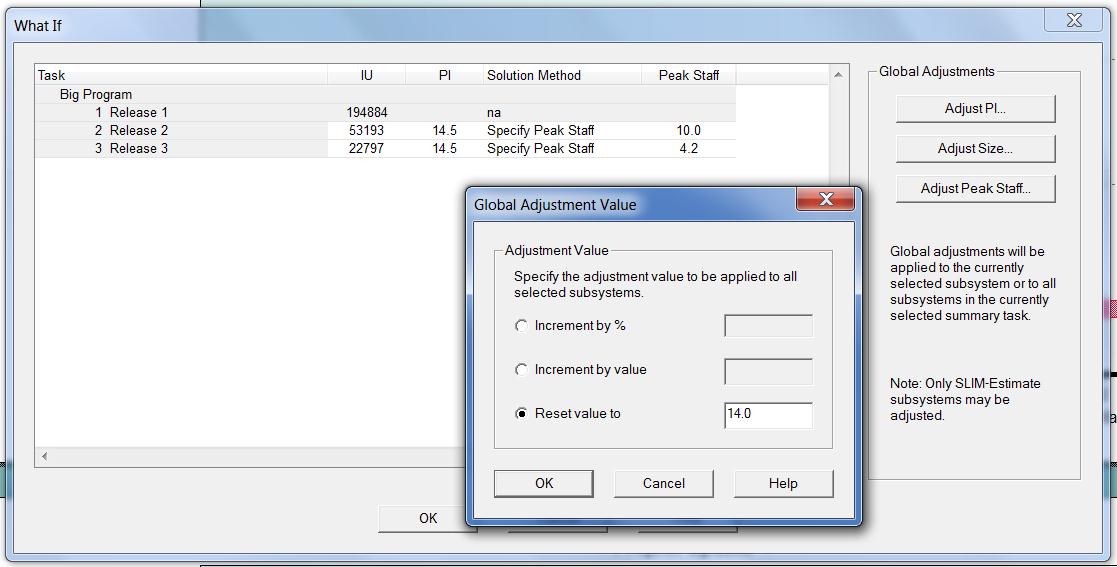After being away from QSM and the software world for three years, I was blown away by SLIM v8.0's dynamic product integration. I knew it was coming, yet I was still impressed by the simplicity and power of analysis promoted by real-time data and tool links across the SLIM Suite that frees managers to focus on the important program issues.
SLIM-MasterPlan is the center of the SLIM Suite product integration. It improves upon previously existing program management features of aggregating multiple SLIM-Estimate projects and ancillary tasks with two new capabilities:
- Linking SLIM-Control workbooks to provide real-time project tracking and control at the program level
- Performing What If analysis at this higher management view to consider a wider range of potential outcomes.
The What If analysis feature is what I want to highlight.
A good personal development coach knows the "power of the question." Questions lead to discovery, innovation, and action that brings about positive change. Better questions lead to better answers. SLIM's power and distinction has always been fast and easy evaluation of the impact of change, and exploring the realm of possible outcomes. That's what we are doing when we ask ourselves "What If…?" (or our boss asks us - and we better know the answer!). SLIM's solution logs make it easy to compare estimates, plans, and forecasts to alternative solutions, QSM trends, and your historical project database.
Now that SLIM-Control active projects can be incorporated into a SLIM-MasterPlan program, the impact of one project's performance upon dependent follow-on projects can be assessed immediately. Let's say you decided the best way to model your current 18 month business web application was to plan 3 releases, with durations of 9, 5, and 4 months respectively. You have created separate SLIM-Estimate workbooks for each release, and rolled them up into a SLIM-MasterPlan program. Release 1 started 6 months ago, and you are tracking it using SLIM-Control. Actual duration, effort, and size data enables SLIM-Control to calculate the actual PI. Requirements and Design artifacts, plus code that's already unit tested, enable you update your size estimate. Are the actual values for PI and Size different from the original plan? How far off are they, and what will that variance do to releases 2 and 3?
The What If analysis feature provides the answers you need without ever leaving SLIM-MasterPlan. Only SLIM-Estimate tasks are available for What If. The parameters available for analysis are: Size, PI, and Solution Method (Peak Staff, MBI, QSM Default Solution). You can update any or all of these parameters for individual tasks, or choose to make a Global Adjustment. After modifying one or more task parameters, the current solution is automatically rerun via the SLIM-Estimate API and the entire program is recalculated. Your SLIM-Estimate workbooks will not reflect the new 'what if' solution until the solution is logged and the SLIM-MasterPlan workbook is saved, so you can perform as many What If analyses as you wish without affecting the underlying workbooks.

Tracking individual project tasks is important. But it's so easy to get lost in the details and lose sight of the real issues. Rolling up single task percent complete values rarely provides a true picture of project health. The speed and ease of macro-level project performance and forecast analysis found in SLIM v8.0 helps managers ask meaningful questions, and take positive action to keep their programs on track.
If you're new to SLIM, you can see more tool features in our online demo or, if you're already a SLIM tool user, check out our FAQs for more tips and tricks.
